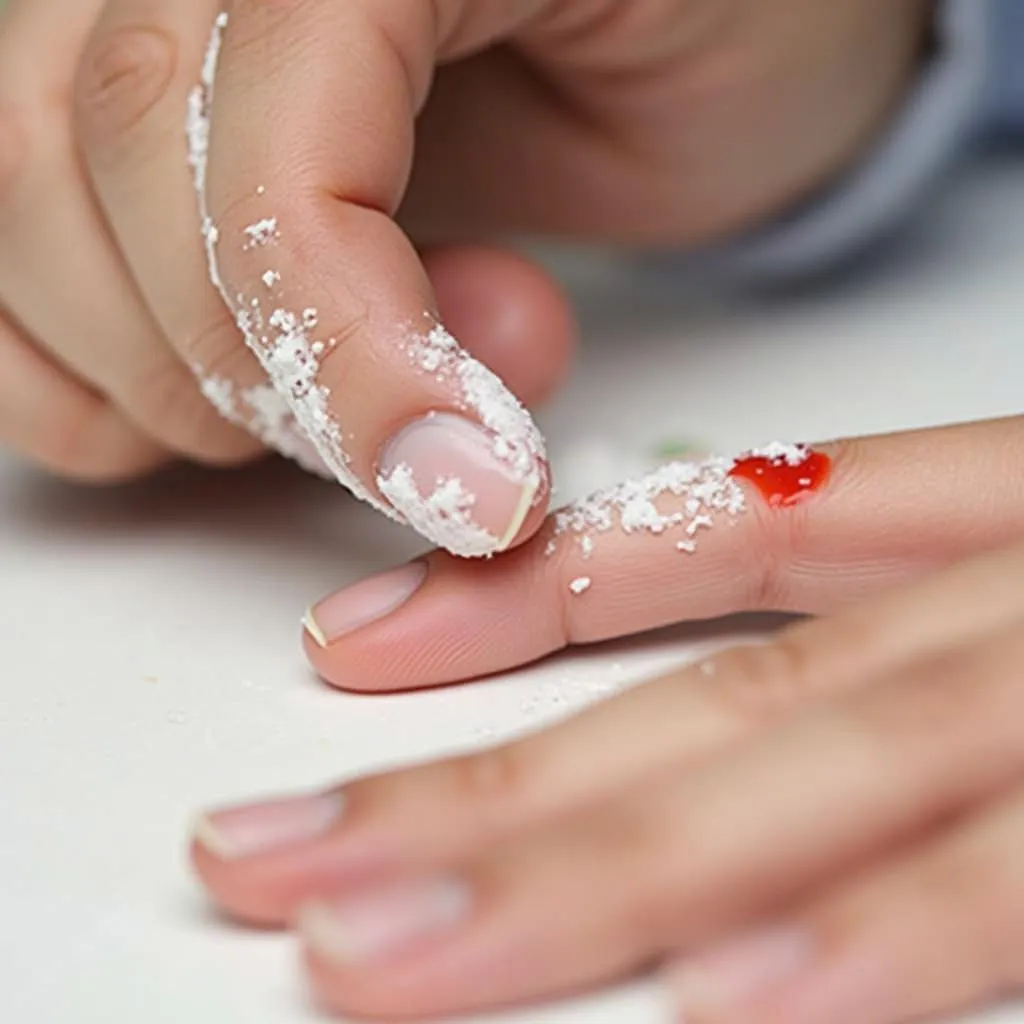Getting a little carried away during a baking session or a fun art project with the kids often leads to colorful hands and faces. While food coloring is designed to wash away easily, sometimes those vibrant hues decide to linger a little longer than expected. Don’t worry; getting rid of those stubborn food coloring stains doesn’t have to involve harsh chemicals or endless scrubbing. We’ll explore some simple, effective, and skin-friendly methods to get you and your little ones back to your usual, un-tinted selves.
Understanding Food Coloring Stains
Before we dive into the solutions, let’s understand why food coloring can be tricky to remove. Food coloring is designed to add vibrant colors to food, and it achieves this thanks to its strong pigmentation. This pigmentation can sometimes bind to the proteins in our skin, making the stain a bit more stubborn than a simple water rinse can handle.
Simple Solutions for Removing Food Coloring from Skin
The good news is that most food coloring stains will fade naturally with time and regular washing. However, if you’re looking for a quicker solution, there are several household ingredients that can help:
1. Soap and Water: Your First Line of Defense
- How it works: Good old soap and water is always the best starting point for any stain removal. Soap helps to break down grease and oils, which can trap the food coloring on the skin.
- How to do it: Wash the stained area with warm water and antibacterial soap. Gently rub the area with your fingers or a soft washcloth. Rinse thoroughly and repeat if necessary.
2. Baking Soda Paste: Gentle Exfoliation
- How it works: Baking soda is a mild abrasive that can help to lift the stain from the skin without being too harsh.
- How to do it: Create a paste by mixing a tablespoon of baking soda with a small amount of water. Apply the paste to the stain and gently rub in a circular motion. Rinse with warm water and repeat as needed.
3. Lemon Juice: Natural Bleaching Action
- How it works: Lemon juice contains citric acid, which acts as a natural bleaching agent and can help to fade the color of the stain.
- How to do it: Apply fresh lemon juice to the stain using a cotton ball. Allow it to sit for a few minutes before rinsing with warm water. Repeat if needed.
 Using Lemon Juice to Remove Food Coloring
Using Lemon Juice to Remove Food Coloring
4. Olive Oil: Breaking Down the Stain
- How it works: Olive oil can help to break down the pigments in the food coloring, making it easier to wash away.
- How to do it: Massage a small amount of olive oil into the stain and let it sit for a few minutes. Wash the area with soap and water.
Tips for Stubborn Stains
If you’re dealing with a particularly stubborn stain, here are a few additional tips:
- Act Quickly: The sooner you treat a stain, the easier it will be to remove.
- Be Patient: Some stains may take a few attempts to remove completely.
- Avoid Hot Water: Hot water can set some stains, making them more difficult to remove. Stick to lukewarm or cool water.
- Don’t Rub Too Hard: Excessive scrubbing can irritate the skin.
 Removing Food Coloring Stains with Baking Soda Paste
Removing Food Coloring Stains with Baking Soda Paste
When to Consult a Doctor
In rare cases, food coloring can cause skin irritation or allergic reactions. If you experience any redness, itching, swelling, or discomfort, discontinue use of any home remedies and consult a healthcare professional.
Conclusion
Dealing with food coloring stains is a common occurrence, especially in households with little artists and bakers. With these simple and effective home remedies, you can easily remove those colorful marks and get back to enjoying those fun activities! Remember, patience and gentle treatment are key. And if a stain proves to be particularly persistent, don’t hesitate to seek professional advice.
FAQs
1. Can I use vinegar to remove food coloring stains?
While vinegar is known for its stain-removing properties, it’s best to avoid it on the skin, especially for young children. Vinegar is acidic and can be irritating to sensitive skin.
2. Will these methods work on all types of food coloring?
Most food coloring stains will respond well to these methods. However, some gel-based food colorings may be more difficult to remove and may require repeated applications.
3. Can I use these methods on fabric stains as well?
While some of these methods may work on fabric stains, it’s always best to test them on an inconspicuous area first. Food coloring can permanently stain some fabrics.
4. My child has sensitive skin. What’s the safest method for removing food coloring?
For sensitive skin, start with the gentlest method, which is washing with soap and water. If that doesn’t work, try olive oil or a baking soda paste with a very small amount of water. Always test any method on a small area of skin first.
5. How do I prevent food coloring stains in the future?
Covering surfaces with newspaper or plastic tablecloths during messy activities can help. Have your child wear an apron or old clothes that you don’t mind getting stained.
Need help with stubborn food coloring stains on your fingers? Check out our comprehensive guide: how to get food coloring off fingers
Have questions or need personalized advice? Contact our team at Color Box Hanoi! Call us at 0373298888, email us at [email protected], or visit us at 86 Cầu Giấy, Hà Nội. Our team is available 24/7 to assist you.

